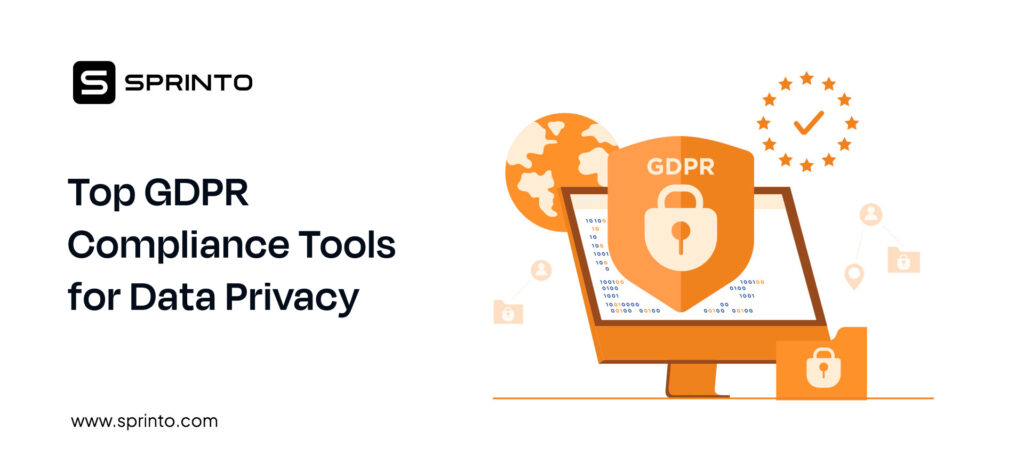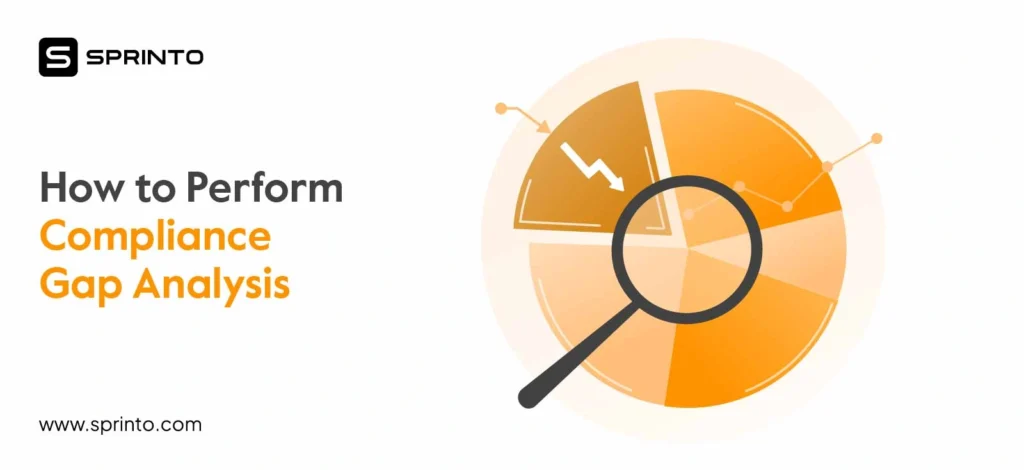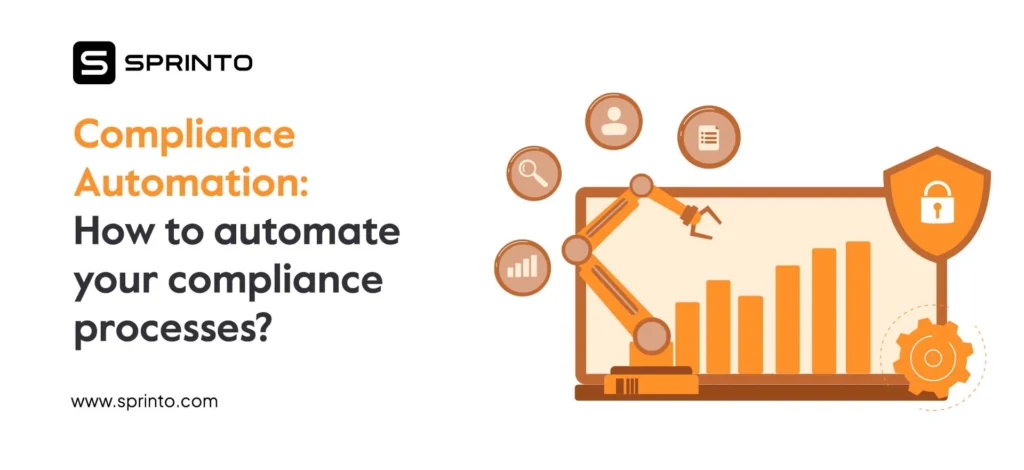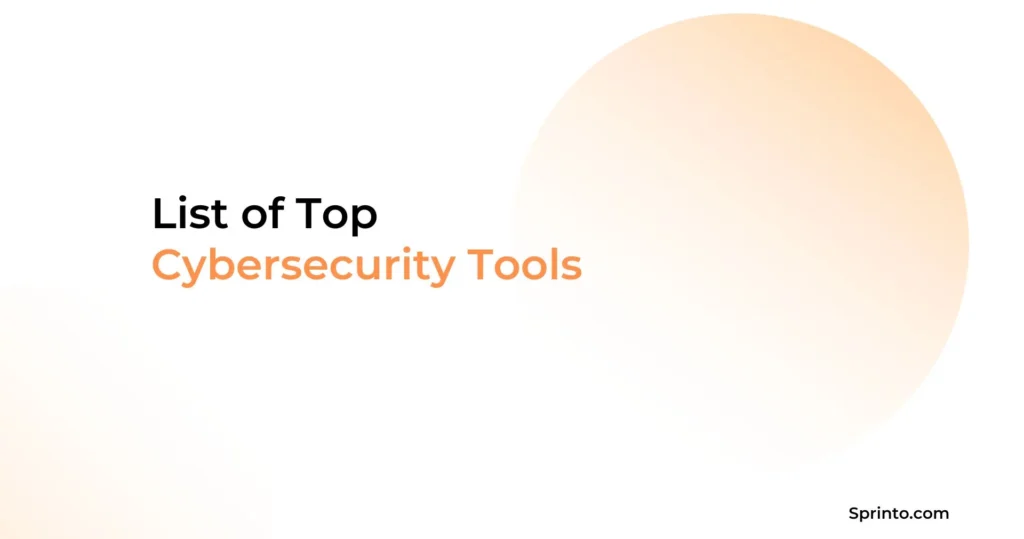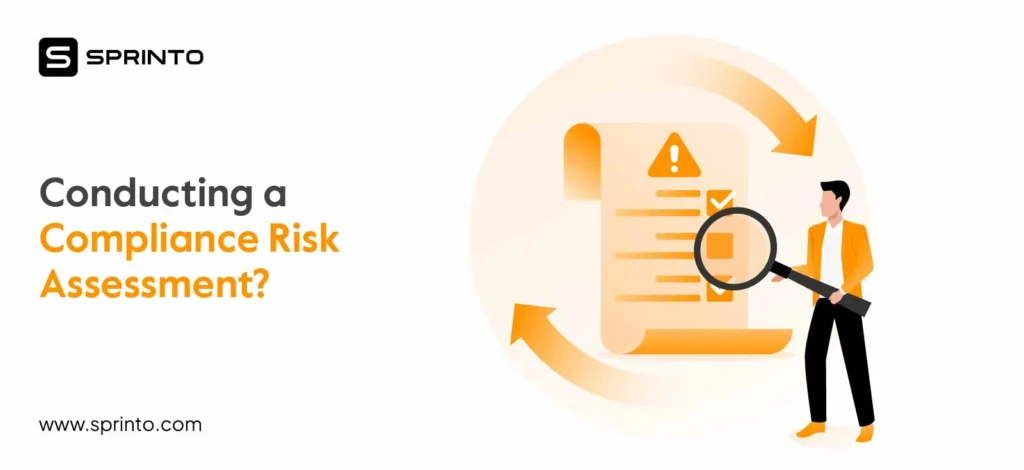TL;DR
- GDPR is the EU’s strict data privacy law aimed at protecting sensitive health information. It applies to any entity that treats or processes EU citizen data.
- GDPR grants patients significant rights over their data, demands strong security measures, and mandates that data breaches be reported within 72 hours.
- While both GDPR and HIPAA protect health data, GDPR is broader, applies globally to EU residents’ data, and is generally stricter on consent and individual rights than HIPAA.
Patient trust in healthcare is rooted in privacy. Unfortunately, not every healthcare provider preaches this.
I’ve watched teams struggle to navigate consent forms, email attachments, and rogue spreadsheets. Worst of all, I’ve seen entire organizations ruined due to the repercussions of healthcare data leaks.
GDPR was designed to put an end to all of that. It forces clarity about what data you collect, why you collect it, and how long you keep it.
Even more critically, GDPR also gives patients a voice.
Getting GDPR right is about more than compliance. It’s an opportunity to protect your organization while reinforcing trust with patients. Here’s a closer look at what it really means in practice.
What is GDPR?
The General Data Protection Regulation, or GDPR, is a comprehensive data privacy law enacted by the European Union that came into force in May 2018.
It governs the way organizations collect, process, and store the personal data of individuals within the EU.
The regulation is built on a foundation of seven key principles: lawfulness, fairness, and transparency; purpose limitation; data minimization; accuracy; storage limitation; integrity and confidentiality; and accountability.
Fines for getting GDPR compliance wrong can climb as high as €20 million or 4% of a company’s global revenue, whichever is more.
Automate data mapping, audits, and breach response with Sprinto—built for healthcare providers.
👉 Talk to an expert →
How is GDPR relevant to healthcare?
The short answer is that the health sector is front and center when it comes to data protection.
Across the EU, data protection authorities in 27 countries have imposed 237 fines in the healthcare sector, amounting to approximately €22.8 million for violations by hospitals, pharmacies, and other healthcare providers.
And due to the sensitive nature of the information involved, the connection between GDPR and healthcare is direct and critical. Under GDPR, health data is classified as a “special category of personal data,” which requires more stringent protection than other types of personal information. This special category includes
- Data concerning health: Any information related to a person’s physical or mental health, including the provision of healthcare services.
- Genetic data: Information about an individual’s inherited or acquired genetic characteristics
- Biometric data: Data resulting from specific technical processing of physical, physiological, or behavioral characteristics, such as fingerprints or facial images, that allow for unique identification
For healthcare providers, this means that every piece of patient information, from medical histories and diagnoses to test results and insurance information, is subject to the strict rules of GDPR. The regulation requires healthcare organizations to have a clear and lawful basis for processing this data, with explicit patient consent being a primary requirement.
Key GDPR provisions for healthcare
To understand how GDPR applies to real-world healthcare, it is essential to comprehend the core provisions that directly impact the management of patient data. These are foundational pillars designed to protect individuals and build trust. Let’s break down the essentials.
Patient rights
GDPR gives patients significant control over their health information. It is like the patient’s bill of rights for their data. Key rights include:
- The Right to Access: Patients can request a copy of their personal data that a healthcare provider holds. Providers typically have one month to respond to such a request
- The Right to Rectification: If a patient finds that their data is inaccurate or incomplete, they have the right to have it corrected
- The Right to Erasure (The Right to be Forgotten): In certain situations, a patient can request the deletion of their personal data. However, this is not an absolute right in healthcare, as providers often have legal obligations to retain medical records for a specific period
- The Right to Data Portability: This allows patients to obtain their data in a structured, commonly used format to transmit it to another healthcare provider, which is particularly relevant in the age of electronic health records
- The Right to Restrict Processing: Patients can request that their data be used only for limited purposes, for example. At the same time, accuracy is being verified or during a dispute over data use.
- The Right to Object: Patients can object to the processing of their personal data in certain circumstances, such as when it’s used for research or marketing unrelated to their care.
- The Right to Be Informed: Gives patients the right to know how their personal data is collected, used, stored, and shared, including details about the legal basis and data retention periods.
- The Right to Withdraw Consent: If data processing is based on consent, patients can withdraw that consent at any time, and processing must stop unless another legal basis applies.
- The Right to Complain: Patients have the right to lodge a complaint with a data protection authority if they believe their data rights have been violated.
- The Right to Judicial Remedy and Compensation: Ultimately, patients can seek legal redress and claim compensation if they suffer material or non-material damage due to a GDPR violation.
Lawful basis of processing
A healthcare organization can’t process health data just because it wants to. It must have a valid legal reason, a “lawful basis,” to do so. While there are many legal bases, the most important one in healthcare is explicit consent.
Unlike regular consent, explicit consent must be a clear, specific, and unambiguous agreement from the patient to have their data processed for a particular purpose. This means no pre-ticked boxes or hiding consent in long, jargon-filled documents.
However, GDPR does allow for processing sensitive health data without explicit consent if it’s necessary for providing medical diagnosis or healthcare services, or for reasons of public interest in public health.
The Data Protection Officer (DPO)
Given the large-scale processing of sensitive data, most healthcare and social care organizations are required to appoint a Data Protection Officer (DPO). This person is an independent expert and advocate for data protection within the organization.
Their responsibilities include monitoring GDPR compliance, advising on data protection obligations, providing guidance on risk assessments, and acting as the main point of contact for data protection authorities.
Data Protection Impact Assessments (DPIAs)
A Data Protection Impact Assessment (DPIA) is mandatory before launching a new project that involves processing personal data in a way that is likely to pose a high risk to individuals’ rights and freedoms, such as implementing a new electronic health record system or a telehealth platform.
A DPIA is a systematic process that identifies and minimizes the risks associated with a project. It helps the organization understand the potential impact on patient privacy and build in necessary safeguards from the very beginning, embedding a “privacy by design” approach.
Mandatory data breach notifications
When a data breach occurs that is likely to risk individuals’ rights and freedoms, GDPR imposes a strict timeline for notification.
Healthcare organizations must report the breach to the relevant data protection authority without undue delay, and where feasible, within 72 hours of becoming aware of it.
If the breach poses a high risk to patients, they must also be informed directly. This rule forces a high level of transparency and accountability and ensures that organizations have robust incident response plans ready to go.
Centralize policies, automate evidence collection, and meet consent obligations without manual errors.
👉 Book a demo →
GDPR compliance for healthcare providers
GDPR is a continuous commitment to protecting patient data, which is woven into the very workings of your organization’s operations. For any healthcare provider, the path to compliance goes through clear, deliberate actions, and here’s what it looks it:
Step 1: Know your data inside and out
You can’t protect what you don’t understand. The first, and arguably most important, step is to conduct a thorough audit of all the patient data you handle. This means mapping the entire lifecycle of your data.
- What data do you collect? (could be medical records, insurance details or even genetic data).
- Where does it come from? (common sources are patient intake forms, other providers, and wearable devices).
- Where is it stored? (mostly on-site servers, cloud platforms and physical archives).
- Who has access to it and why? (mostly clinicians, administrative staff, third-party billing companies).
- How long do you keep it?
This data mapping and inventory process gives you a detailed picture of your data landscape and highlights potential risks and compliance gaps from the start.
Step 2: Fortify your defenses with strong security
GDPR demands that you implement appropriate “technical and organizational measures” to safeguard patient data. This is a broad requirement, but it boils down to two key areas:
- Technical safeguards: This is the technology you use to protect data. Essential measures include end-to-end encryption for data both in transit (for instance, being sent over a network) and at rest (like, sitting on a server). Strong access controls also make sure that a staff member can only access the minimum data they need to perform their job (a principle known as least privilege).
- Organizational safeguards: Your people are your most important line of defense. Regular, role-specific GDPR training for all staff is non-negotiable. This builds a culture of privacy and helps prevent human error, which remains a leading cause of data breaches. Clear, documented policies for data handling, password management, and devices are also necessary.
Step 3: Embrace privacy by design
A core concept of GDPR is “privacy by design and by default.”
This means that data protection should be baked into your systems and processes from the very beginning. Whenever you plan to launch a new service, like a patient portal, a telehealth app, or an AI-powered diagnostic tool, you must conduct a Data Protection Impact Assessment (DPIA).
This assessment helps you systematically identify, evaluate, and mitigate any potential privacy risks before the project goes live.
Step 4: Have an action plan for when things go wrong
Even with the best defenses, data breaches can happen. GDPR requires that you have a well-defined and tested incident response plan.
This plan must enable you to detect, report, and investigate a breach swiftly. Moreover, any breach that poses a risk to individual rights and freedoms must be reported to the relevant data protection authority within 72 hours of discovery.
The rise of compliance automation software
For many healthcare organizations, manually managing the complexities of GDPR is a daunting, time-consuming, and error-prone task. For this very reason, compliance automation software has become a godsend for healthcare providers. These platforms are designed to streamline and simplify the entire compliance lifecycle.
Instead of relying on manual checks, these tools can:
- Automate data discovery and mapping to give you a real-time, dynamic view of your data landscape.
- Continuously monitor your systems for compliance gaps and security risks and provide alerts so you can be proactive.
- Simplify the processes for patient rights requests, such as for data access or erasure, with automated workflows.
- Manage vendor risk by assessing the compliance posture of third parties that handle your data.
- Make audits less complicated by automatically collecting and organizing the evidence needed to demonstrate compliance.
This is where a compliance automation platform like Sprinto comes in.
Sprinto is a continuous security and compliance platform that connects to your cloud stack and keeps a live check on GDPR controls through hundreds of native integrations. It maps people, infrastructure, and apps to the right requirements, and it auto-collects audit-ready proof so you are not rebuilding screenshots and logs at quarter-end.
Moreover,
- Sprinto runs 24×7 compliance monitoring through 300+ native integrations.
- Automates evidence collection by pulling logs, screenshots, and audit trails into formats auditors accept.
- Guides Data Protection Impact Assessments with structured workflows linking risks to controls and owners
- Manages third-party risk through vendor discovery, tiered reviews, continuous monitoring, and centralized due diligence records
GDPR vs HIPAA: Two giants of health data privacy
For anyone in the healthcare space, the conversation around data privacy inevitably brings up two major regulations: GDPR and the Health Insurance Portability and Accountability Act (HIPAA).
While they both share the fundamental goal of protecting sensitive health information, GDPR vs HIPAA makes a very sensible comparison.
HIPAA
HIPAA has been the standard for protecting patient data in the United States since its introduction in 1996. Its Privacy Rule sets the national standards for who can access and use Protected Health Information (PHI). It’s a US-centric law, specifically governing “covered entities,” like healthcare providers, health plans, and healthcare clearinghouses, and their business associates.
GDPR
GDPR, on the other hand, is a far broader and more recent regulation from the European Union. Its primary function is to protect the personal data of all individuals within the EU, giving them unprecedented control over how their information is used. A big difference is its extraterritorial reach; GDPR applies to any organization, anywhere in the world, that processes the personal data of people in the EU.
This means a US-based hospital that treats an EU citizen on vacation, a research clinic that includes EU residents in a clinical trial, or a telehealth app with users in Europe must comply with both HIPAA and GDPR.
Here’s a side-by-side look at their key differences:
| GDPR | HIPAA | |
| Primary goal | To protect the personal data and privacy of all EU individuals | To protect the privacy and security of Protected Health Information (PHI) in the United States |
| Geographic scope | Applies to the data of any individual in the EU, regardless of where the organization processing the data is located | Applies within the United States to covered entities (providers, payers) and their business associates |
| What data is protected? | All personal data, health-related data is considered a “special category” requiring extra protection. | Protected Health Information (PHI), which is individually identifiable health information held by a covered entity |
| Key individual rights | Includes the right to access, rectify, erase, and data portability | Includes the right to access and amend PHI. A right to erasure is not explicitly provided |
| Breach notification rule | Must notify the supervisory authority within 72 hours of becoming aware of the breach | Must notify affected individuals and authorities without unreasonable delay, and no later than 60 days following discovery |
| Penalties | Fines of up to €20 million or 4% of global annual turnover, whichever is higher | Fines range up to an annual maximum of $1.5 million per violation type |
| Consent | Often requires explicit, clear, and specific opt-in consent for processing health data | Consent can be implied for treatment, payment, and healthcare operations. Authorization is needed for other uses. |
Sprinto helps you manage dual frameworks, privacy policies, and evidence collection from one dashboard.
👉 Talk to compliance experts →
Challenges and risks in Healthcare GDPR
Implementing GDPR in a healthcare setting is not without its challenges. The very nature of healthcare, with its complexity, urgency, and reliance on a vast network of providers and technologies, creates unique challenges.
To effectively manage these risks, you must understand them.
1. Volume and sensitivity of data
Healthcare organizations are treasure troves of the most personal information imaginable. From genomic data and mental health records to chronic illness statuses, this information is highly sensitive and also incredibly valuable to cybercriminals.
Protecting this vast ecosystem of data from both internal and external threats is a monumental task.
2. Legacy IT Systems
Many hospitals and clinics still rely on outdated software and hardware that were not built with modern data protection principles in mind.
These older systems can be difficult to patch, lack robust encryption capabilities, and may not support the granular access controls required by GDPR. These reasons alone make them prime targets for security breaches.
3. Third-party Risk
The interconnected nature of modern healthcare also introduces third-party vendor risk.
A typical hospital works with dozens, if not hundreds, of external partners, from billing companies and lab services to cloud storage providers and SaaS platforms for electronic health records.
Each of these vendors represents a potential weak link in the data protection chain. If a vendor experiences a breach, the healthcare provider is still responsible for the compromised patient data.
4. Human error
Finally, human error remains a persistent and significant threat.
A busy nurse accidentally sending an email with patient details to the wrong recipient, a physician falling for a sophisticated phishing attack, or an administrator using a weak, easily guessable password can all lead to serious data breaches.
Without a strong culture of privacy and continuous training, even the most advanced technological defenses can be undermined.
Healthcare GDPR Best Practices
While the challenges are real, they are far from impossible to solve. Here are some essential best practices for healthcare providers.
1. Cultivate a culture of privacy
Go beyond a simple checklist approach. Data privacy should be a core value championed by leadership and understood by every single employee.
This involves regular, engaging, and role-specific training that moves beyond a once-a-year presentation. Simulate phishing attacks and provide immediate feedback to help staff recognize real-world threats.
2. Embrace the privilege of least privilege
Staff members should only have access to the specific patient data they need to perform their duties. Implement strong Role-Based access Controls (RBAC) to ensure a clinician can’t access billing information and an administrator can’t view clinical notes unless required.
Regularly review and audit these access rights, especially when an employee changes roles or leaves the organization.
3. Conduct strict vendor due diligence
Before entering into a contract with any third-party vendor, perform a thorough assessment of their security and privacy practices.
Ensure you have a strong Data Processing Agreement (DPA) in place that clearly outlines their responsibilities under GDPR. Don’t just take their word for it; ask for evidence of their compliance, such as certifications or audit reports.
4. Make encryption your default setting
All personal health data should be encrypted, both when it’s sitting on a server or hard drive (at rest) and when it’s being transmitted over a network (in transit). This is one of the most effective technical safeguards you can implement.
In the event of a device being lost or stolen, strong encryption can render the data on it unreadable and may prevent the incident from being classified as a high-risk data breach.
5. Plan and practice your incident response
Develop a clear and detailed incident response plan that outlines the steps to take, who is responsible for what, and how you will meet the 72-hour breach notification deadline.
This plan should be tested regularly through drills and simulations to ensure your team can act decisively under pressure.
Map patient data, monitor vendors, and stay audit-ready 24×7 with Sprinto.
👉 Start your Sprinto demo →
Seamlessly manage GDPR for healthcare with Sprinto
Compliance automation takes the grind out of GDPR by mapping controls to the regulation, continuously testing them, and auto-gathering proof. For healthcare environments, where data sprawl and vendor chains are real, automation also keeps RoPA, DPIAs, and DSR workflows current as systems evolve.
Sprinto brings that automation to life in your cloud stack. It connects through 200+ native integrations and a custom API to centralize assets, risks, and controls, then turns live system activity into control status, tasks, and audit-ready evidence.
- RoPA and data mapping, kept fresh: Sprinto helps you build and maintain an Article 30–ready Record of Processing Activities, with platform alerts when processing changes mean your RoPA needs an update.
- DPIA guidance tied to controls:Structured DPIA workflows support scoping, risk evaluation, and mitigation, with outcomes linked back to operating controls and owners.
- Continuous vendor risk management: A unified vendor catalog, automated control tests, and ongoing monitoring map third-party risk to GDPR obligations so processor issues are surfaced early.
- Evidence on autopilot: From control tests to artifacts, Sprinto’s continuous-compliance engine auto-collects the proof auditors expect and reduces prep time and preserves provenance.
- Shareable GDPR reporting and DSR measures: Generate a control-level GDPR status or report you can share with stakeholders, and operationalize Subject Access Request measures within your program.
Want to expedite GDPR for healthcare? Speak to our experts today.
FAQs
Yes, it often is. If your organization processes the personal data of anyone located in the EU, for example, treating a tourist, offering telehealth services abroad, or including them in a clinical trial, then you must comply with GDPR.
Violations lead to steep penalties. Fines can reach up to €20 million or 4% of your global annual revenue, whichever is higher. For example, one hospital was fined €400,000 for poor access controls. Beyond the fines, a violation causes significant reputational damage and erodes the trust of your patients.
While GDPR’s principle is to keep data no longer than necessary, healthcare is a special case. National laws often legally require hospitals to retain medical records for specific, extended periods for patient safety and legal purposes. The key is to have a clear data retention policy that balances both GDPR principles and these legal obligations.
Compliance is an ongoing process, not a one-time fix.
The core steps include:
– Mapping all your patient data to know where it is and who can access it
– Implementing strong security measures like encryption and regular staff training
– Appointing a Data Protection Officer (DPO) to oversee your program
– Creating and testing an incident response plan to meet the 72-hour breach reporting rule
Managing GDPR with spreadsheets is risky and inefficient. Compliance automation software is designed to help. These platforms can automate data discovery, manage patient consent requests, continuously monitor for risks, and streamline audits. Tools like Sprinto are built to simplify these complex processes.
Pansy
Pansy is an ISC2 Certified in Cybersecurity content marketer with a background in Computer Science engineering. Lately, she has been exploring the world of marketing through the lens of GRC (Governance, risk & compliance) with Sprinto. When she’s not working, she’s either deeply engrossed in political fiction or honing her culinary skills. You may also find her sunbathing on a beach or hiking through a dense forest.
Explore more
research & insights curated to help you earn a seat at the table.











